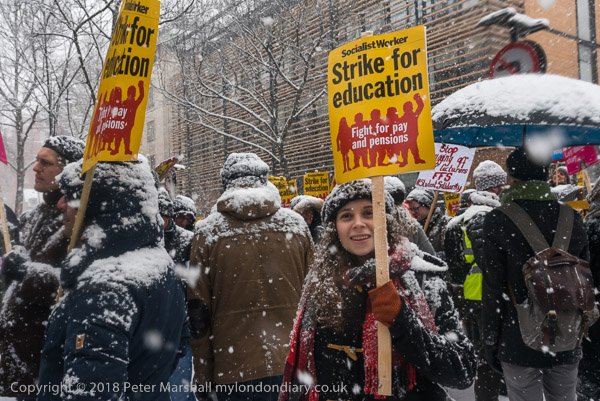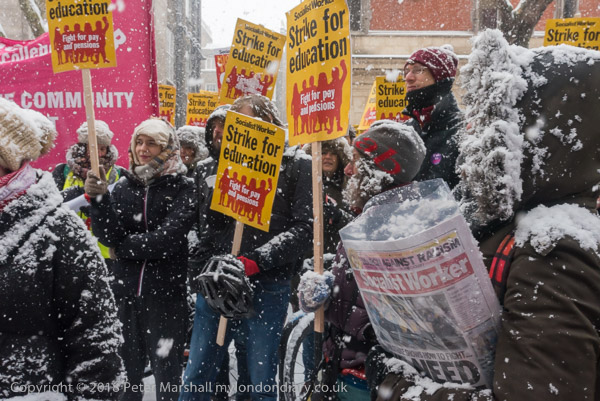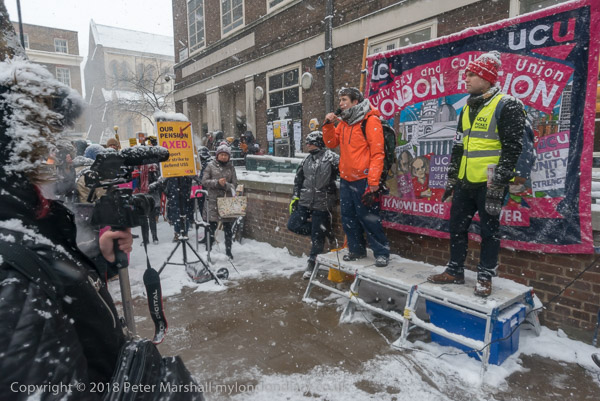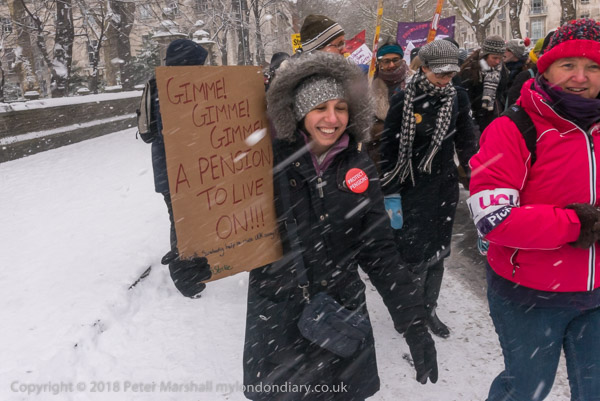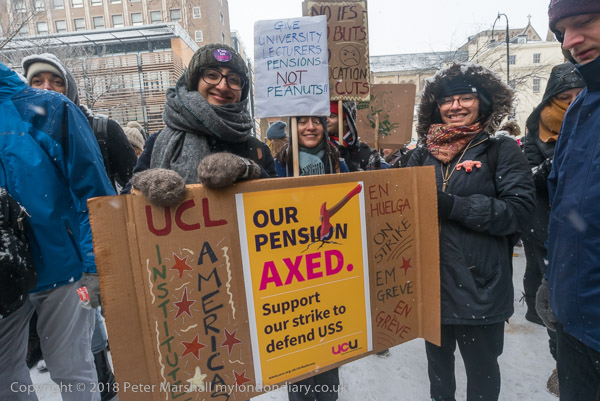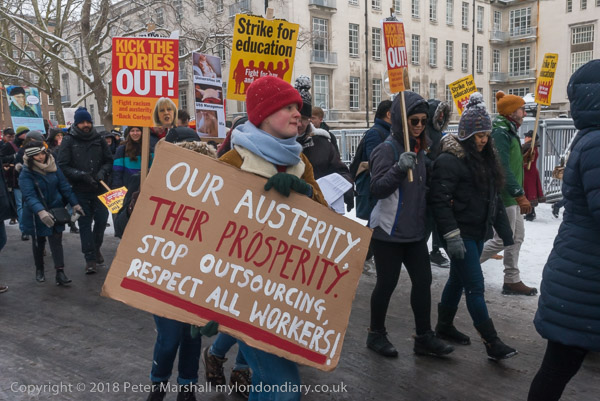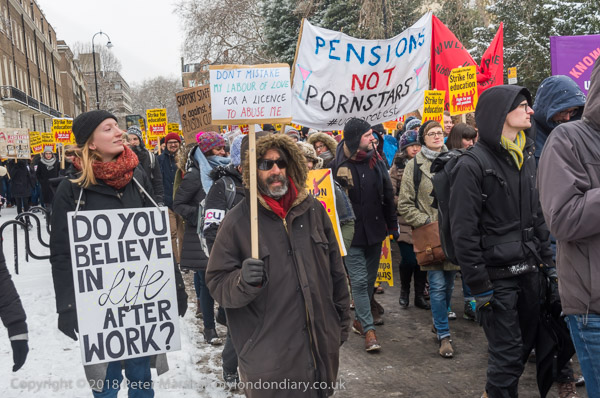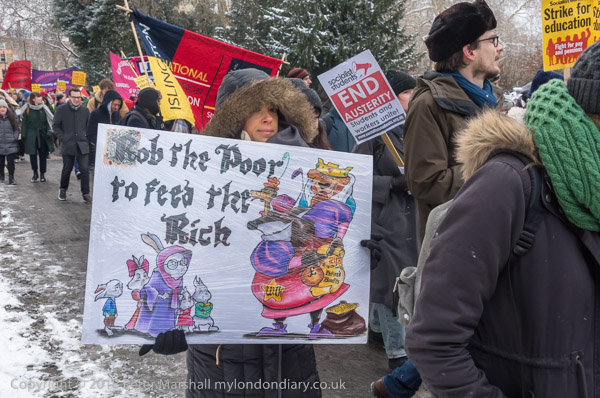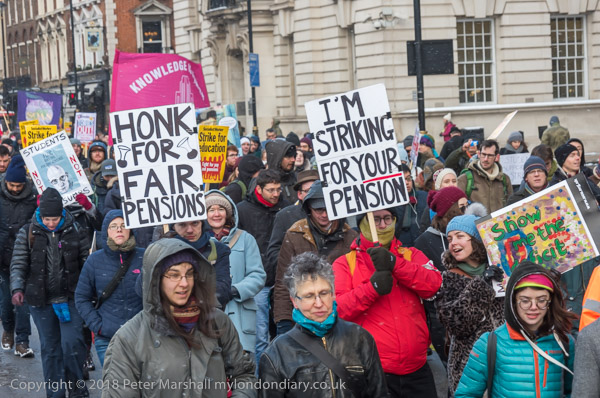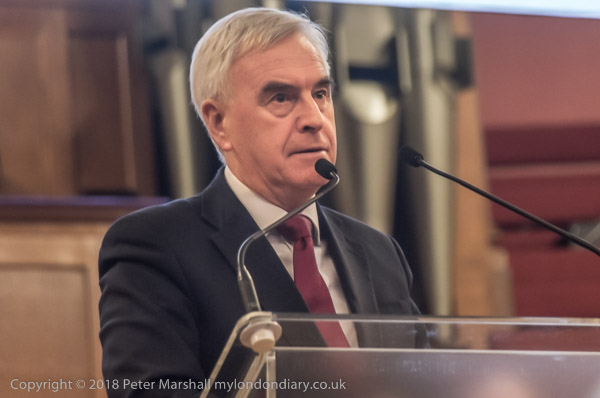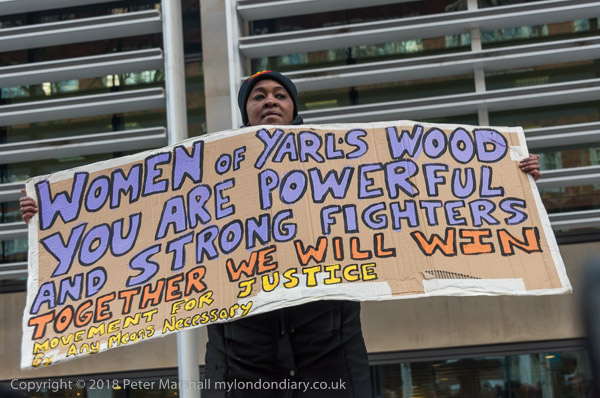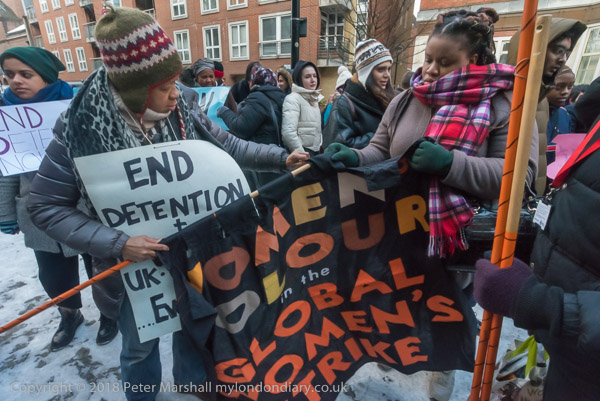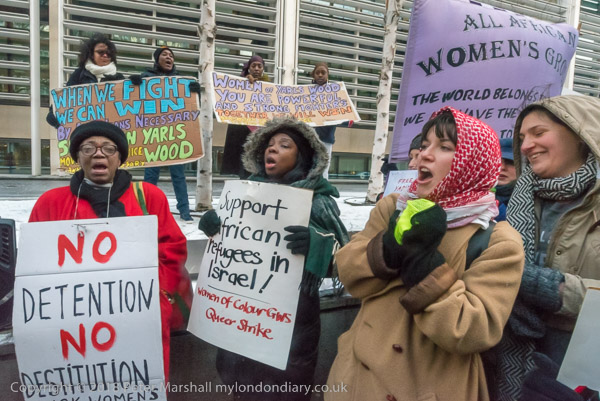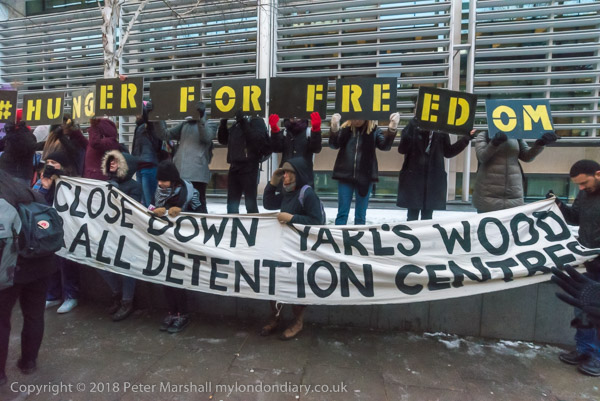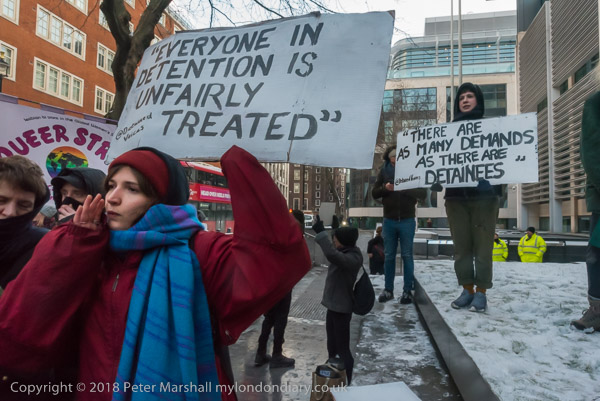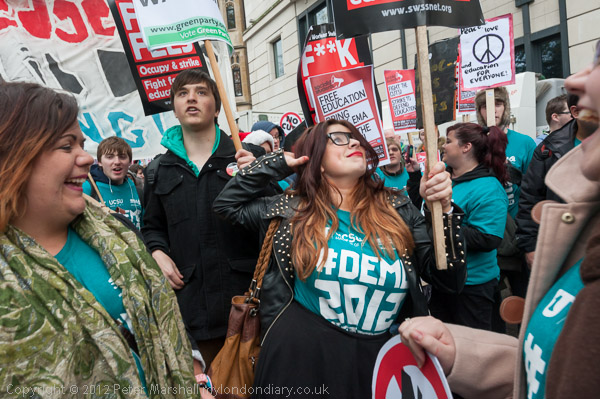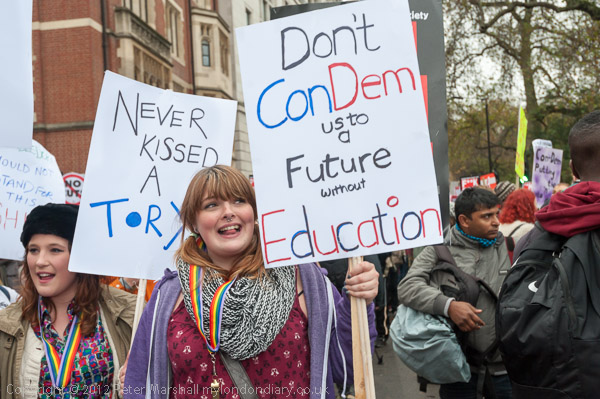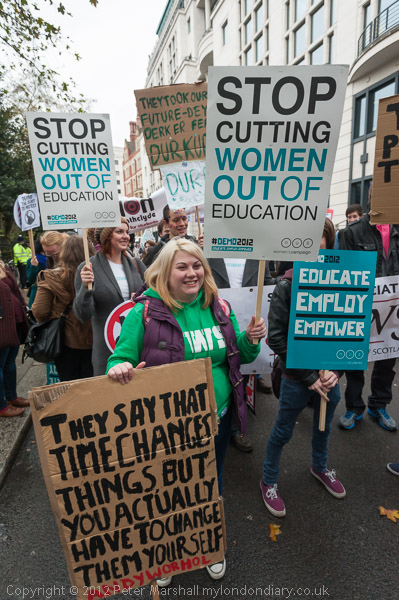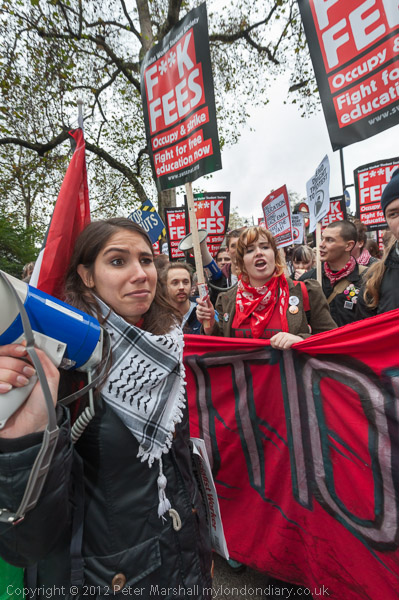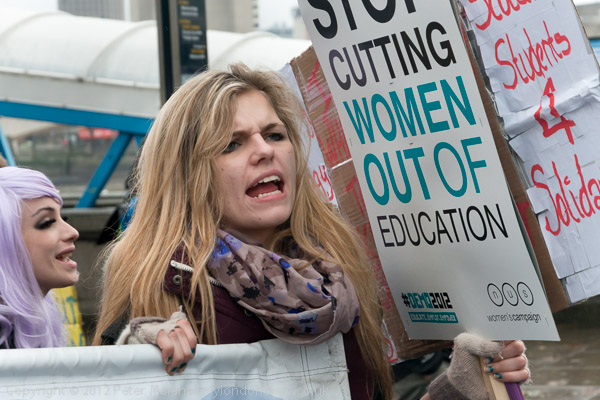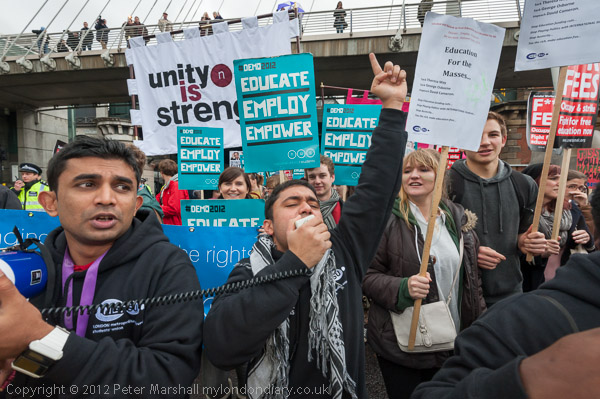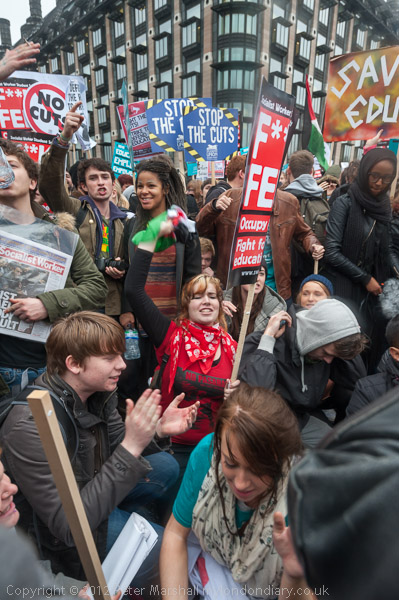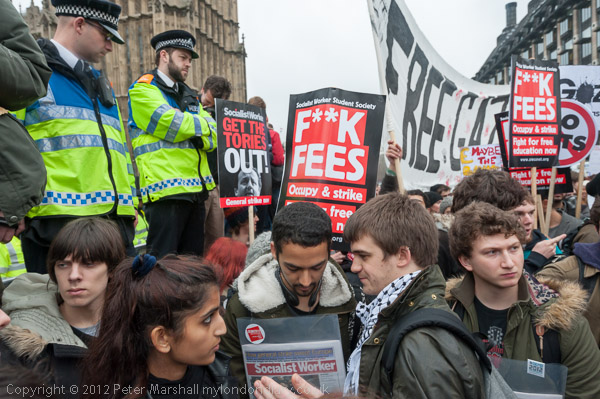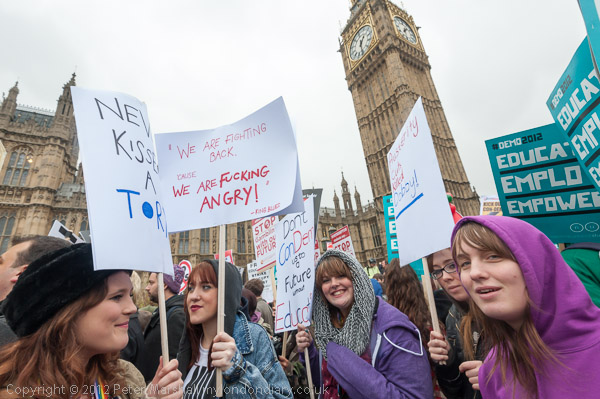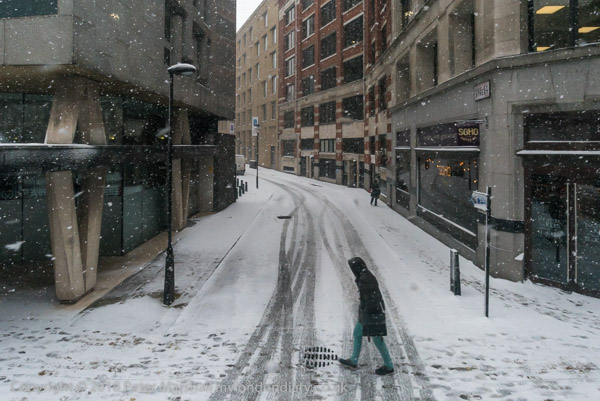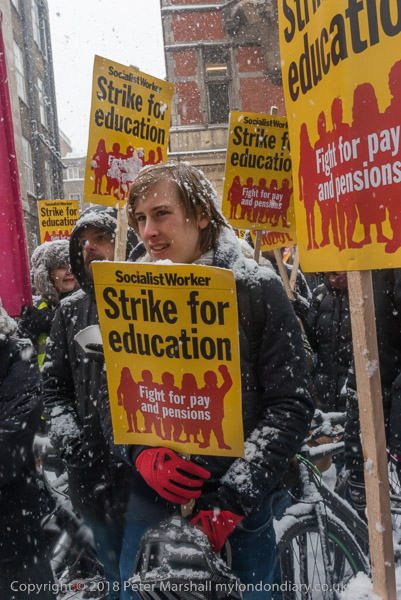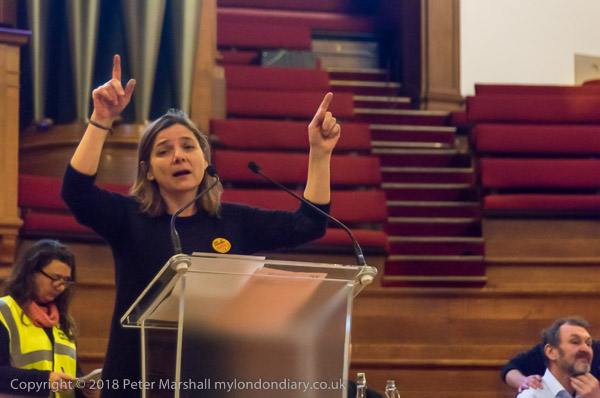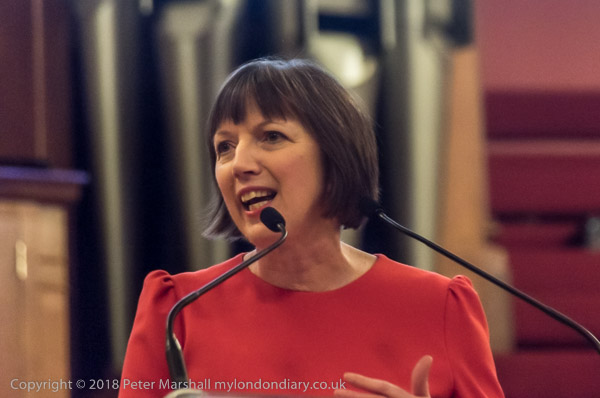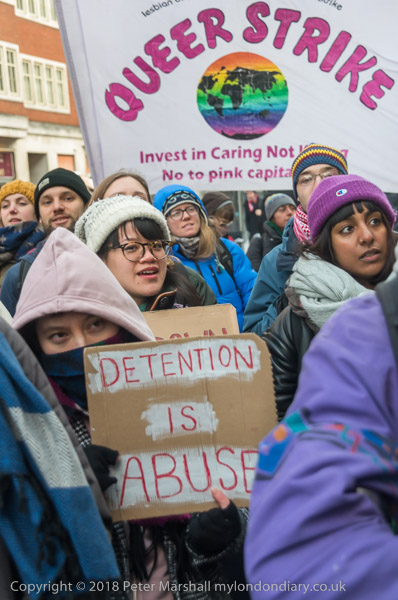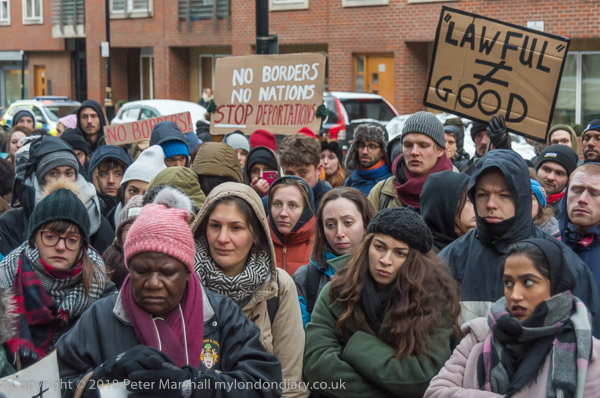Students Protest Fees & Cuts: On Wednesday 24th November 2010 several thousand students set out to march from the University of London Union in Malet St through Whitehall and then on to the Lib-Dem HQ in Cowley St.
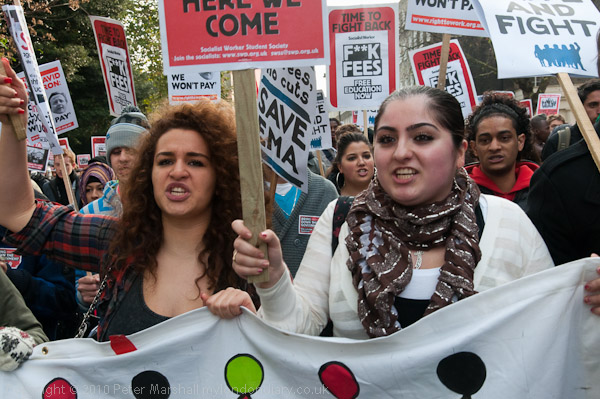
The protest was called by the National Campaign Against Fees and Cuts and Revolution and was a part of a national day of action after the Browne Review of Higher Education Funding had advocated a huge increase in tuition fees, allowing them to rise from £3,290 to £9000 a year – £27,000 for a three year course. The increase was approved by Parliament in December 2010.
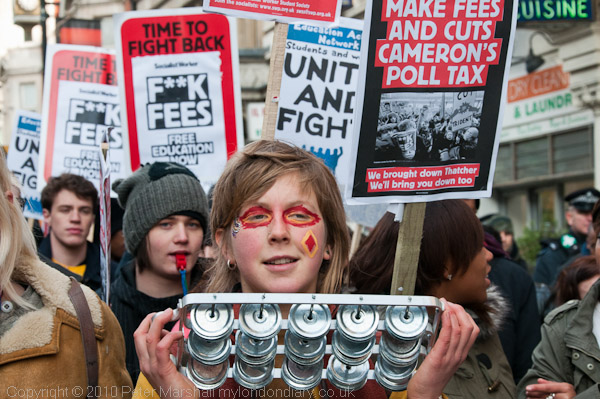
Living costs were also increasing and by 2010 a typical student in London needed around £5000 each year. With the increase in fees that meant those students who relied on loans would end their three year course owing over £40,000.
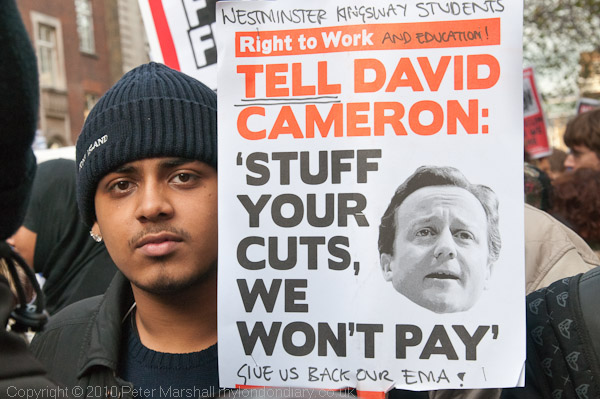
The government had also anoounced the previous month that the Educational Maintenance Allowances for 16-18 year old students in full-time education from low income homes were to be scrapped. Many youger students from schools and colleges had come to the protest along with those in higher education.

Universities were also being hit by the coalition government cuts in funding for arts and humanities courses. Many departments were being shut down, greatly reducing the opportunities for students.

So there were many things for students (and anyone concerned about education) to be angry about, but the march had begun peacefully and most of those taking part were not out for trouble.
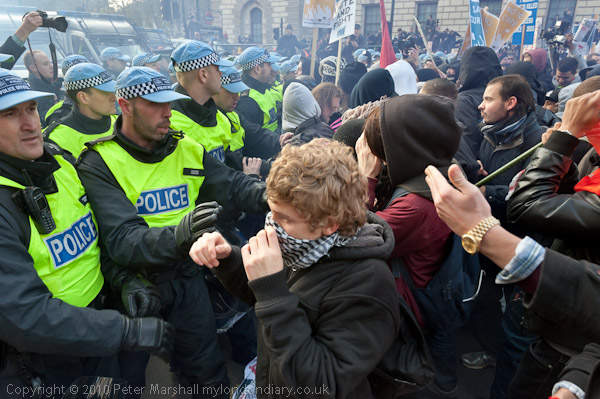
The students intended to march to Trafalgar Square and then down Whitehall past Downing Street and on through Parliament Square to the Liberal-Democrat headquarters in Cowley Street, a short distance to the south.
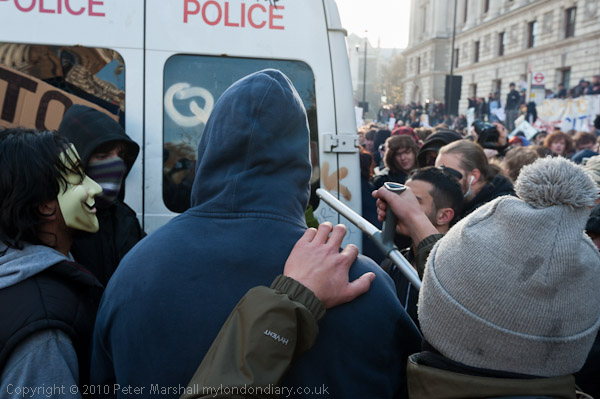
But it soon became clear that the Metropolitan Police had other ideas and were out to confront the students and stop the march. When the marchers turned into Aldwych a line of police stopped them continuing.
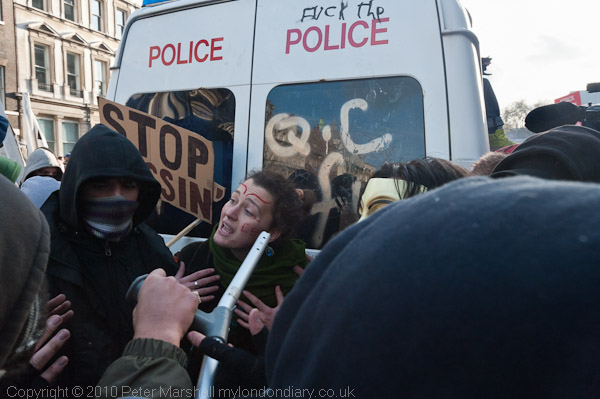
The students then surged down towards Temple Station and marched west along the Embankment, then up a side street onto Strand and on to Trafalgar Square. On Whitehall and met another group of students who had started their march at Trafalgar Square but had been stopped by police just before reaching Parliament Square.

“There were now perhaps 5000 students milling around in a small area, some chanting slogans (rather than the rather ordinary ones about education and cuts many favoured “Tory Scum, Here we come” and a long drawn out ‘David Camero-o-on’, answered by the crowd with ‘F**k off back to Eton’) but most just standing around waiting for something to happen. “
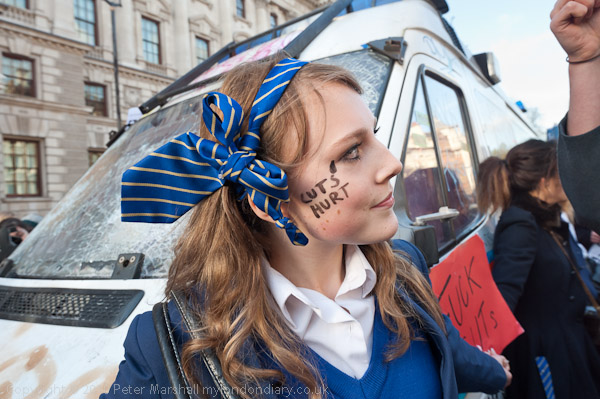
“Police had thoughtfully left an old police van as a plaything for the protesters outside the treasury. Perhaps because the tread on its tyres was so worn it would have been a traffic offence to move it – and it looked very unlikely to pass an MOT.”
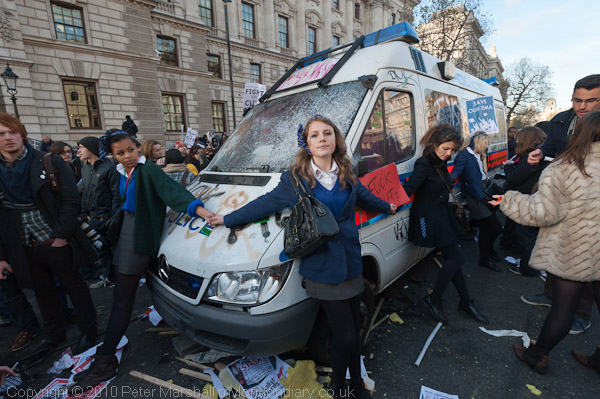
“The stewards told the protesters it was obviously a plant, and certainly the press I talked to were convinced. This didn’t stop a few masked guys attacking it (and I was threatened with having my camera smashed for photographing them doing so) despite a number of students who tried to prevent them, some linking hands and forming a chain round it. It was possibly the same small group who earlier had smashed the glass on the bus stop across the road.

A few protesters managed to burst through the police lines, but most of those there “were probably well-behaved students on their first demonstration, and although the police line was breached a number of times most of them just stood around wondering what to do rather than following them.”
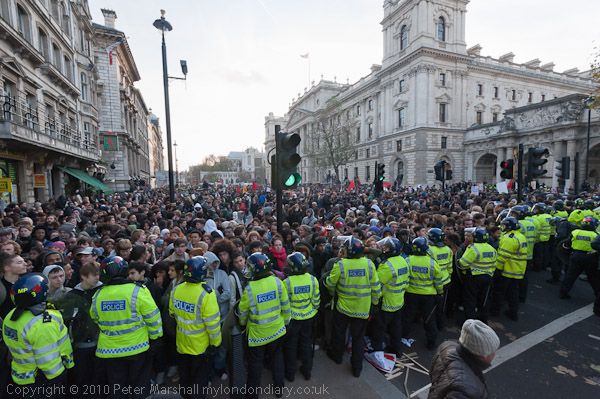
On My London Diary I try to describe the confused and dangerous situation that developed as police began threatening protesters and some making rather indiscriminate use of their batons. I was shocked at the police tactics which appeared designed to create public disorder by kettling – and a small minority of the students rose to the bait. The great majority of the students had come for a peaceful march and rally and to exercise their democratic right to protest, but the police, almost certainly under political pressure, had decided not to allow that.
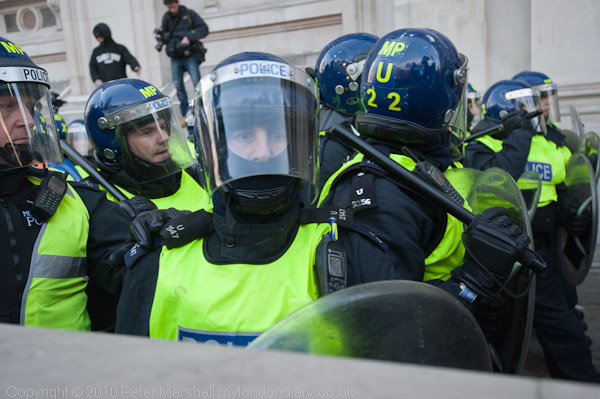
Eventually I’d had enough and it seemed that the protesters would be kettled for some hours, and I decided to leave in order to file my pictures and story.
Flickr – Facebook – My London Diary – Hull Photos – Lea Valley – Paris
London’s Industrial Heritage – London Photos
All photographs on this page are copyright © Peter Marshall.
Contact me to buy prints or licence to reproduce.
